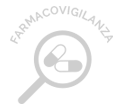Glossary
BIOAVAILABILITY
The bioavailability of a medicine measures the quantity of the medicine that is absorbed and made available to exert therapeutic effects on the body. A medicine administered intravenously will have a bioavailability equal to 100%, as, entering directly into the bloodstream, it will be immediately available to organs and tissues, while medicines administered using other routes (e.g: orally) will have a lower bioavailability value because of partial absorption.
PATENT AND PATENT PROTECTION
The patent assures the holder that for the duration of the patent, the patentee has exclusive industrial property rights – and, consequently, utilisation and exploitation rights – related to the patented product and constitutes, therefore, a sort of temporary right of monopoly in favour of the said patent holder. The granting of such exclusive rights is directed at remunerating the costs and investments relating to the ideation and development of the patented product by the patentee and acts, therefore, as an incentive for research. The regulations for patenting pharmaceutical products in Italy goes back to 1979, the year that decree 338 of the President of the Republic was promulgated. In the case of medicines, the necessity to demonstrate efficacy and safety with lengthy clinical tests, means that years elapse between the achievement of a patent and of a marketing authorisation. For this reason the legislation provide a further layer of protection that compensate the patentee, at least partly, for the delay in the economic exploitation of the invention. This further protection is known as CPC (Certificato Complementare di Protezione – or – Complementary Protection Certificate)
TRANSPARENCY LIST
After one or more equivalent medicines of a medicine reimbursed by the SSN, whose patent protection has lapsed, have been authorized, AIFA includes both the original medicine and its equivalents in a list, which is up-dated monthly, called the “transparency list”. It is available on the AIFA web site, http://www.agenziafarmaco.gov.it/it/content/liste-di-trasparenza-e-rimborsabilita In this list the original medicine and its equivalents are listed together, with their corresponding reference price. The medicines grouped together on the transparency list can be substituted. This list therefore attests the fact that the listed medicines are considered equivalent and sanctions their substitution.
ORIGINATOR OR ORIGINAL MEDICINE
An original medicine or reference medicine is a medicine that has a marketing authorization granted on the basis of a complete dossier, containing comprehensive data relating to its chemical quality, the results of toxicology and pharmacology studies (in laboratory animals) and the results of the clinical trial program (studies in patients). An authorised medicine is sold exclusively by the company that developed it, for the length of its protection under patent. A generic or equivalent medicine is a medicine that has the same active ingredient, the same strength and the same pharmaceutical form as the original medicine, but is authorised after the protection afforded by the patent has lapsed, subject to documentation of its chemical quality and demonstration of bioequivalence to the original medicine. As the medicine is bioequivalent, reference may be made to the clinical and toxicological-pharmacological tests carried out by the originator.
ACTIVE INGREDIENT
The term active ingredient indicates the substance that possesses therapeutic activity in a medicine. The remaining components of a pharmaceutical form are called excipients and are utilised to improve its stability, storage and administration or to modify the release rate of the active ingredient.



